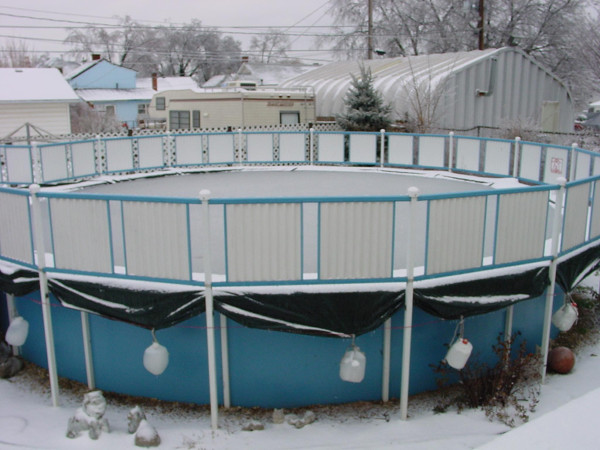
Reviewed by Andrada Simion, Master of Science in Chemistry
- Before beginning to drain, turn your pool’s circulation system off to avoid running air through your system and potentially causing lasting damage.
- Determine if you have access to a medium-sized water pump or if you will drain using a garden hose siphon; if you choose to use the hose siphon, you may want to use more than one hose to speed up the process.
- Choose a flat location for the pump’s outlet hose that is far enough away to prevent flooding or reentry.
If using an electric pump:
- Dry your hands thoroughly before turning on the electric pump.
- Once the pump is turned on, ensure that the water level is going down before leaving the area; although the process may take several hours to complete, return to the area frequently to ensure that the draining procedure is continuing to go smoothly and is free of flooding or mechanical breakdowns.
- Although water pumps are an effective method, you will not be able to clear all of the water with the pump alone; turn off the equipment once you are unable to remove any water, typically when the pool has reached a level of 6-12 inches.
If using a submersible pump:
- Many electric pumps can be submerged in water; if you are using a submersible option, place the pump at the bottom of the swimming pool, ensuring that the power cord is long enough to reach the outlet without aid of an extension cord to avoid electrical complications.
- Monitor the process at the start, and then return periodically to check its progress; this process will typically take eight hours.
If using a garden hose:
- Begin the siphoning process either by cutting a few feet (typically six to eight) off each end of a standard hose; if you are using more than one hose, repeat this process with each individual item.
- Place each of the hoses in the pool so that they are submerged completely and then lift one end, covering it tightly with your hand or securing it with a clamp, and set it outside of the pool pointing downward into the designated drainage area before removing your hand or clamp; the other end should still be submerged at this point.
- You may also use a hose still attached to the faucet in order to siphon; if you choose to do this, you will need to place the unattached end in the water and then turn on the faucet so that the interior of the tubing becomes airless– then, disconnect from the faucet and place the non-submerged end in the designated draining area.
- Draining with garden hoses will be a slower process than using an electric pump of any variety, and you will need to return to the area at several points to verify that it is still siphoning.
- When the water level has reached 6-12 inches, remove the hoses as there will not be further drainage after this point.
Draining excess water and final steps:
- Whether you are using a pump or a hose, the end result will be the same: a small amount of water at the bottom of the pool that will need to be removed either with a wet/dry vac, or buckets; if your pool has a drain you can also simply remove the drain at this point.
- If your motive for draining is to remove or change your pool liner, you may take remove the liner and flip it over to dispense with the remaining water.
Tips and Considerations:
- If you are looking to reduce costs, use the garden hose method with buckets at the end to remove water; this will spare you the expense of an electric pump and a wet/dry vac.
- Draining your pool with a hose may be easiest accomplished with two people to monitor each end during the siphoning process.
- It may be worth investing in an electric pump if you drain your pool regularly; this will save you a lot of time in the long run.
- If you are changing your pool liner, make sure you let the pool dry out completely before doing so to avoid any growth of bacteria or algae.